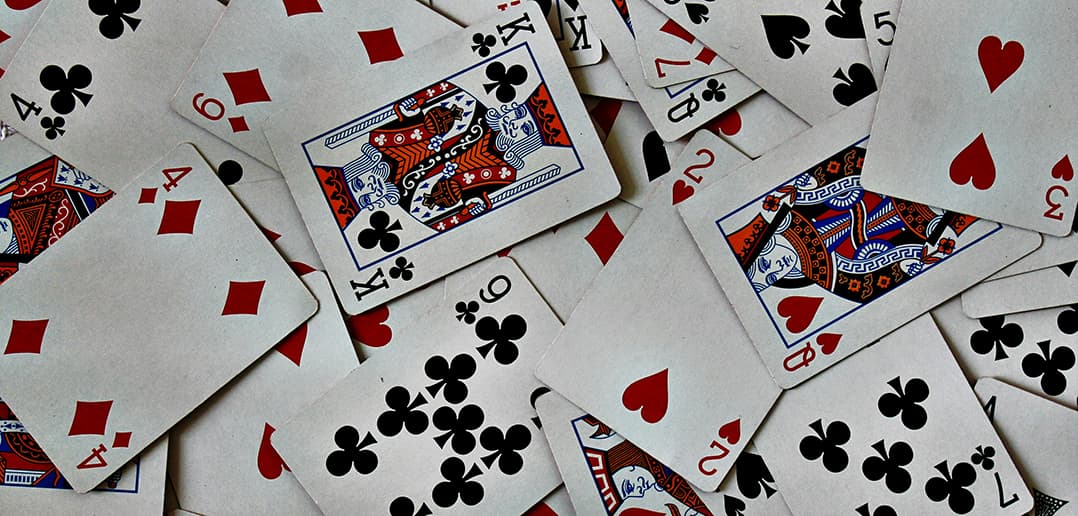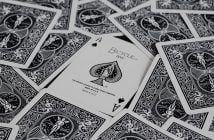Starting hand selection is one of the first areas new poker players focus on, and rightly so. Improper starting hand selection falls into two camps: playing too loose or playing too tight. Most poker players know they should play tighter when in early position and loosen up the closer to the button they are. However, it is common for players to play too loose in early position and way too tight on the button.
Position Is Power
No-Limit Texas Hold’em is a game played with incomplete information because players’ hole cards remain a secret until the showdown. The closer to the button you are seated, the stronger your position because you get to see how the other players act before making your decision. Furthermore, the closer to the button you are, the fewer opponents you have to worry about if the action folds to you. Those two concepts mean you can play a wider range of hands in late position.
In this article, we will look at the starting hand ranges for a No-Limit Texas Hold’em online poker tournament, which is played on an eight-handed table, where the stack sizes are 100 big blinds, and where you are coming in for a raise. The hands you can and should play will likely surprise you.
Bear in mind that ranges can be fluid and should be adjusted according to your opponents’ tendencies. For example, you may want to drop some hands from the bottom of your range in early position if you have a particularly aggressive opponent who is continually three-betting.
Early Position
You should play relatively tight from early position for the reasons mentioned above. Hands that are strong or have the potential to make big hands are the order of the day.
A typical early position hand range looks something like this:
44+, T9s+, J9s+, QTs+ K8s+, A3s+, KQo+, AJo+
That looks like quite a lot of hands; it represents around 16% of all the possible starting hands. Although that list looks like a bizarre formula, it is easy to understand. For example, A3s+ means opening with a raise with suited ace-three or better, while KQo+ means raising with king-queen offsuit and stronger.
By having an early position opening range like this, you’ll keep your opponents guessing while not being too risky that you are playing like a crazy horse.
Middle Position
Your opening range from middle position is not entirely different from your early position hands because you still have most of the table to fight through. A typical middle position opening range consists of approximately 19% of starting hands, and looks a lot like this:
44+, 98s+, T8s+, Q9s+, K7s+, A2s+, KQo+, ATo+
You can also mix up your play by occasionally raising first in with hands like QJo and KJo.
The Lowjack
As we move closer to the button, our opening ranges expand. We are now in the lowjack, which is still middle position but three seats to the left of the button. A good lowjack opening raise consists of the following hands, which make up around 22% of all hands:
33+, 65s+, T8s+, J8s+, Q9s+, K5s+, A2s+, QJo+, KJo+, ATo+
The Hijack
The seat directly before the cutoff is known as the hijack because you have the opportunity to hijack the cutoff and button’s steal attempts. We should be playing around 27-28% of hands for a raise when first to act in the hijack, which looks a lot like:
22+, 54s+, 86s+, T7s+, J8s+, Q7s+, K4s+, A2s+, JTo+, QTo+, KTo+, A9o+
The Cutoff
Once you are first to act and are seated in the cutoff, things start getting interesting. Here, we should be opening with a raise with over 35% of the hands we are dealt because we have positional advantage. Check out what such a rage of hands consists of:
22+, 54s+, 75s+, 96s+, T6s+, J6s+, Q4s+, K2s+, A2s+, T9o+, QTo+, K9o+, A5o+
That is a lot of hands, and you may feel uncomfortable playing jack-six suited but your nerves will lessen in time.
The Button
Everyone knows to play loosely on the button when everyone else has folded, but did you know that the optimal opening range from the button with 100 big blind stacks contains over half of the possible Hold’em starting hands? You should be relentless from the button when first to act, playing the following range:
22+, 43s+, 53s+, 74s+, 85s+, 95s+, T3s+, J2s+, Q2s+, K2s+, A2s+, 87o+, T8o+, J8o+, Q8o+, K5o+, A2o+
Conclusion
The opening ranges shown in this article are not set in stone, but give you an idea of the hands you should be raising first in with in a typical No-Limit Hold’em tournament when everyone has 100 big blind stacks. They’re not a whole lot different even down to 40 big blind stacks either.
Playing so many hands from the button seems absurd, but that is what equity calculators suggest based on the mathematics working behind the scenes. Obviously, if you are on the button and the small or big blind is three-betting frequently, you may want to stop attacking them with ten-four suited!
You will notice that we have neglected to discuss playing from the blinds. That is intentional because blind versus blind play is complex, requiring a dedicated article that will come to the PartyPoker Blog soon.





